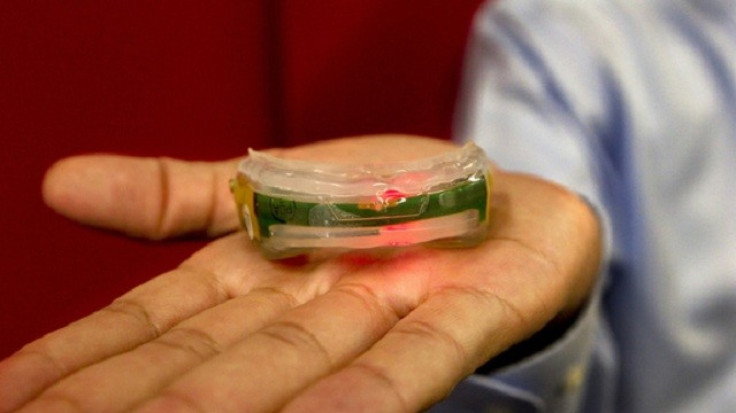New Mouthguards Gather Data on Concussions in Athletes

This season Stanford University football players are adding a new piece of equipment to their gear. Seattle-based firm X2Impact has developed a line of mouthguards and headbands for contact-sport athletes designed to aid in gathering data about concussions and other brain-related sports injuries.
The mouthpieces, which also function as normal mouthguards, are also outfitted with gyroscopes and accelerometers that gauge the force with which athletes are being hit from inside the head, allowing for greater accuracy in measuring the impact.
Brain-related injuries have drawn much attention in recent years, especially in the context of youth and student sports. Because young athletes are likely to underreport their injuries and often do not show visible signs of impairment from an initial impact, an alarming number of brain injuries are going unnoticed.
In a recent study of high school football players conducted by researchers at Purdue University, researchers found that players in the study received 200-1,800 hits to the head in a single season, with helmet-sensor data indicating that impact forces to the head ranged from 20 Gs to up to 300Gs. To put that particular figure into perspective, a soccer player 'heading' a ball usually experiences a force of about 20 to 50Gs; a boxer being punched in the head experiences approximately 100 Gs.
More disturbing than the hits themselves, however, was the discovery researchers made while comparing concussed and non-concussed athletes in a series of basic memory tests. When testing uninjured players in order to establish a control group, researchers found that several of the non-concussed players also exhibited signs of impaired brain function. According to Sports Illustrated writer David Epstein, who reported on the story in April, the study found that the number of hits a player had taken over the previous week - even if he did not receive a concussion - was the most reliable predictor of brain impairment. This is particularly scary, because it means that the vast majority of brain damage in football players might be occurring in the absence of any easily recognizable symptoms or of a particularly bell-clanging hit, writes Epstein.
In the absence of symptoms, researchers and those in the sports community are seeking to gather as much information as possible on impact-related injuries as possible while also caring for their athletes. X2Impact is working with Bite Tech, Inc. on a commercial version of the mouthguard, which is expected to be available in 2012. In addition to gathering information, the mouthguards will transmit data about each hit to authorized mobile devices on the sidelines, such as those of athletic trainers, coaches, parents and team physicians. The devices are programmed to alert sideline medical staff both in instances of a single high-impact hit and a series of smaller hits. It is hoped that as researchers gain more information on the nature of the impacts themselves and their effects on athletes, sports medicine will better understand the biomechanics involved in impact-related injuries and better help treat and prevent those injuries in real time, as and before they occur.
© Copyright IBTimes 2024. All rights reserved.











